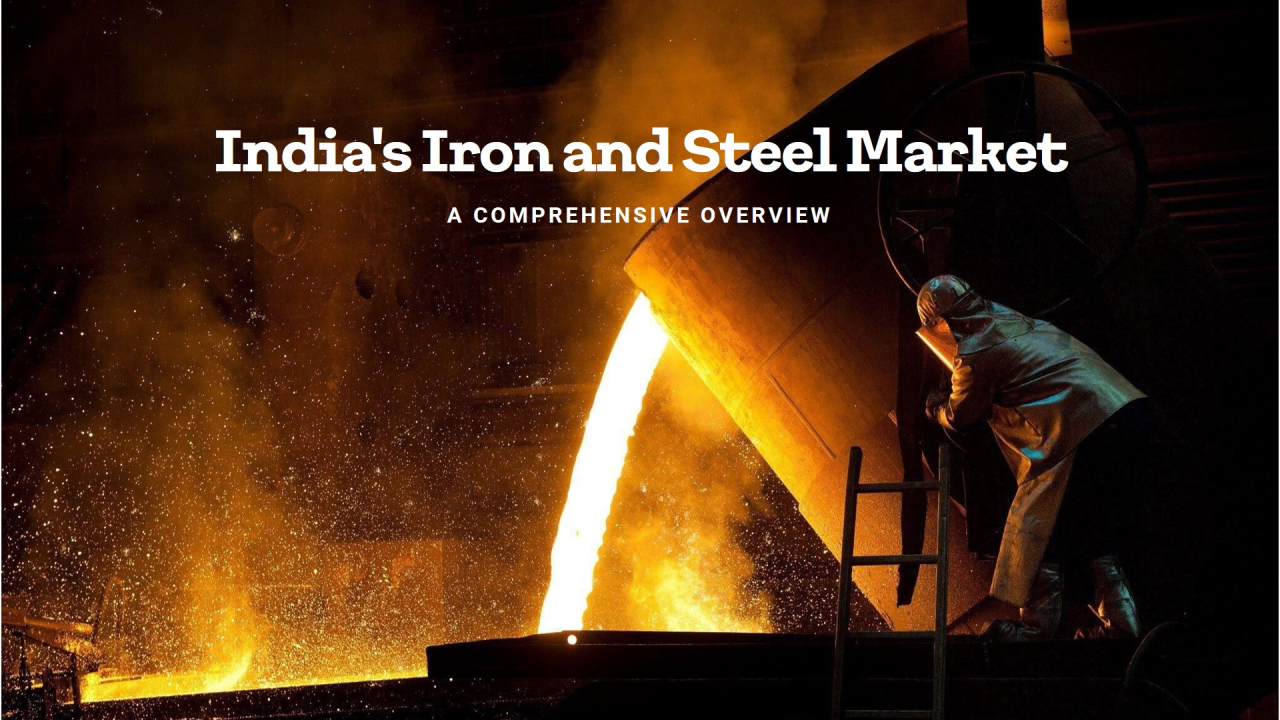The Iron and Steel Industry in India: A Powerhouse of Global Market

The iron and steel industry in India has emerged as a global powerhouse, currently holding the prestigious position of the second-largest steel producer worldwide. With an impressive installed capacity of 161.3 million tonnes (MT) in FY23, India’s steel industry is not just about production but also substantial consumption, ranking as the second-largest consumer of finished steel with a consumption of 120 MT in the same fiscal year.
Table of contents
Economic Contribution and Sectoral Importance
Contributing around 2% to the Gross Domestic Product (GDP), the iron and steel industry is a cornerstone for crucial sectors like infrastructure, real estate, and automobiles. The domestic availability of raw materials such as iron ore and cost-effective labor has significantly boosted the industry’s growth. In recent years, substantial growth has been driven by rising domestic demand and government investments in infrastructure.
Production and Growth Trends
Domestic crude steel production has seen a commendable compound annual growth rate (CAGR) of 3.3% over the past five years, reaching 126.3 MT in FY23. Similarly, finished steel production has grown at a CAGR of 4.8% to 122.3 MT in FY23, reflecting strong domestic market demand. Despite global challenges like the Russia-Ukraine war and inflationary pressures, the Indian steel industry has shown remarkable resilience.
National Steel Policy and Future Projections
The National Steel Policy 2017 aims to further enhance production capacity to 300 MT by FY31 to meet the projected demand of 230 MT. Currently, the per capita finished steel consumption in India stands at 81.1 kg, and it is expected to rise significantly, driven by economic growth and infrastructure development.
Export Potential and Major Players
India’s steel exports, though impacted by recent geopolitical tensions and government policies, have shown potential with notable increases in production capacity. Major industry players like Tata Steel, JSW Steel, and Hindalco are at the forefront, driving growth and positioning the industry for a prominent role in India’s economic future.
Financial Performance
The financial performance of the Indian iron and steel industry in FY24 has been mixed. JSW Steel, one of the leading producers, reported strong performance with a sales increase of 3.99%, and significant jumps in operating profit and net profit by 49.36% and 120.95%, respectively. This growth is attributed to the company’s focus on value-added products and higher exports, which helped offset the impact of lower domestic demand and rising input costs.
In contrast, Tata Steel faced challenges with a 6.60% decline in sales, and drops in operating profit and net profit by 27.67% and 160.08%, respectively. Weak demand in both domestic and international markets, coupled with higher input costs, impacted Tata Steel’s financial performance.
Also Read: Future of Electrical Industry in India
Non-ferrous metal companies also experienced mixed results. Hindustan Zinc saw declines in sales, operating profit, and net profit by 17.64%, 22.00%, and 26.18%, respectively. Similarly, Vedanta reported a 3.74% decrease in sales, a 1.27% increase in operating profit, and a 48.04% drop in net profit. Other companies like Jindal Steel & Power, Steel Authority of India, and APL Apollo Tubes showed varied performance, with some reporting growth in sales and profitability while others faced declines.
Industry Outlook
India’s steel consumption is projected to grow by 9-11% year-on-year in FY24, driven by demand from construction, real estate, railways, roads, capital goods, and consumer durables. By FY26, consumption is expected to reach 151-155 MT, with a CAGR of 7-8%. This growth will be fueled by increased construction activities, sustained momentum in real estate and automobiles, and government investments in infrastructure.
Government initiatives, including a significant increase in capital expenditure for infrastructure in the Union Budget 2023-24, a substantial capital outlay for Indian Railways, and the Production Linked Incentive (PLI) scheme for specialty steel, are expected to boost domestic steel demand. The Domestically Manufactured Iron and Steel Products (DMISP) Policy also benefits the industry by giving preference to domestically produced materials in government tenders.
Also Read: Consumer Durable Industry in India
Conclusion
India’s vast coastline supports exports and imports, positioning it as a leading country in the global steel industry. However, challenges such as high logistics costs due to a skewed inter-modal mix towards road transport and infrastructure constraints remain. The government is addressing these challenges through policies like the Steel Scrap Recycling Policy, the PLI scheme, and measures to ensure raw material security.
Overall, the outlook for the Indian iron and steel industry remains cautiously optimistic, with the sector expected to significantly contribute to the country’s future economic growth. As the industry navigates through challenges and leverages opportunities, it is set to play a pivotal role in shaping India’s economic landscape.


